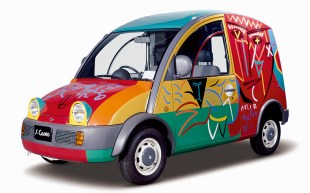Top 10: Formula One driver rivalries
Famous F1 feuds
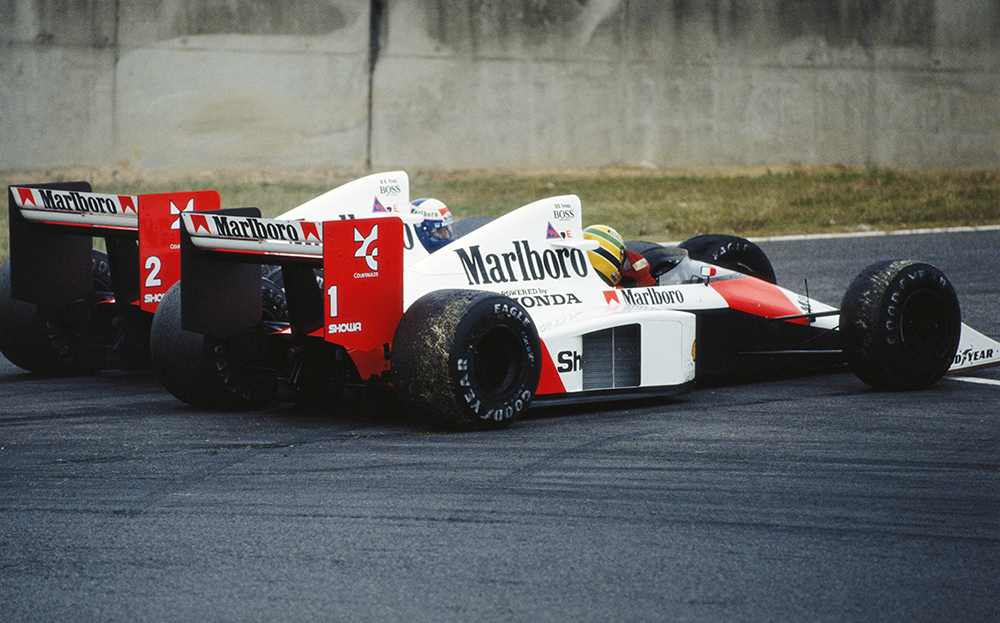
FORMULA ONE fans love a good scrap between drivers on the track but it’s when the rivalry spills over into a bitter war of words off it that they really get excited.
The 2013 F1 season didn’t get off to the best of starts in terms of drama. After the season-opening Australian GP qualifying session was delayed, then delayed again at a rain-sodden Melbourne Park, Jeremy Clarkson described the officials as “killjoys who are turning F1 into a dreary blend of computer science, corporate public relations and cricket” and the drivers as “robots…programmed to do as they’re told”.
Thankfully the sport was listening and the second race at Malaysia proved the current crop of drivers are human after all (see Vettel vs Webber below). Suddenly 2013 is shaping up to be a vintage year and, with that in mind we’ve pulled together the 10 best driver rivalries, in no particular order, the sport has ever seen.
1 Mark Webber / Sebastian Vettel
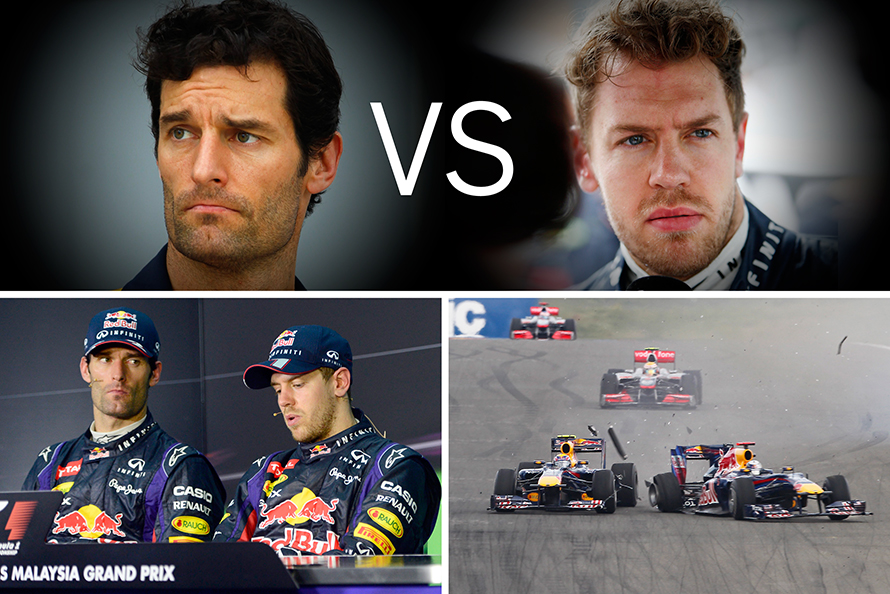
Rivalometer 4/5
Defining characteristic underdog may be about to snap
At the 2013 Malaysian GP, Red Bull’s Sebastian Vettel defied team orders to snatch victory from team-mate Mark Webber in the closing stages of the race. Under mounting pressure from Vettel, Webber at first put up a fight forcing team boss Christian Horner to warn the German over the radio, “This is silly, Seb. Come on!”
Perhaps Horner had in his mind a similar incident between the pair at the 2010 Turkish GP, when Vettel collided with Webber during an overtake and was forced to retire from the race. The relationship between the drivers truly soured two months later at the British GP, when Vettel sustained damage to his new specification front wing in practice and the team replaced it with Webber’s, leaving the Australian with an old spec wing from the parts bin. Webber described himself as “the underdog” of the team after that episode, and after the recent drama at Sepang the typically outspoken Aussie said he had a lot to think about and made a swift exit to “Catch up on some rays in Australia. This will be good medicine.”
Webber’s contract at Red Bull comes to an end at the end of this season, leaving many to speculate that then might be a good time for him to wave goodbye to Red Bull, and Sebastian Vettel.
2 Fernando Alonso / Lewis Hamilton
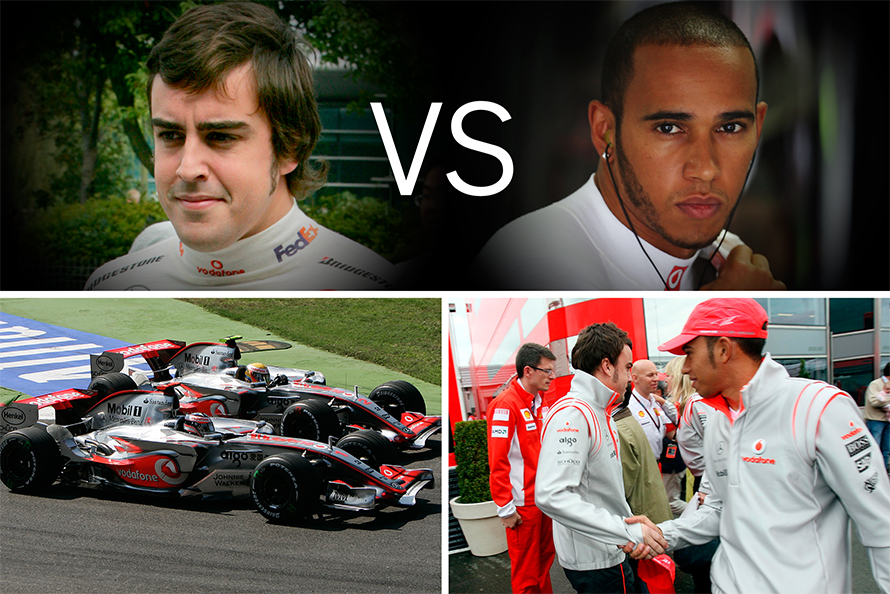
Rivalometer 3/5
Defining characteristic the silent treatment
For the start of the 2007 season, McLaren signed two new drivers: reigning world champion Fernando Alonso and F1 newcomer Lewis Hamilton. Hamilton had surprising speed from the very first practice session of the season but after he compromised one of Alonso’s qualifying laps for the Hungarian GP by failing to let him pass, Alonso could have been forgiven for thinking the rookie was also profoundly petulant.
In response, later in the same session Alonso was followed by Hamilton into the pits for fresh tyres. The Spaniard sat parked outside the garage for a few seconds longer than was necessary, denying Hamilton enough time for a final “hot lap”. Alonso claimed pole position but was subsequently given a five-place penalty on the race grid, which Hamilton described as “quite light if anything”.
Hamilton won the race and from there the rivalry escalated. Soon after Hungary the young Brit claimed Alonso had stopped speaking to him. In reply, Alonso maintained the team was favouring his team-mate. The relationship broke down to the point that McLaren released the Spaniard from his three-year contract two years early, with Alonso moving to Ferrari for the 2008 season.
3 Alain Prost / Ayrton Senna
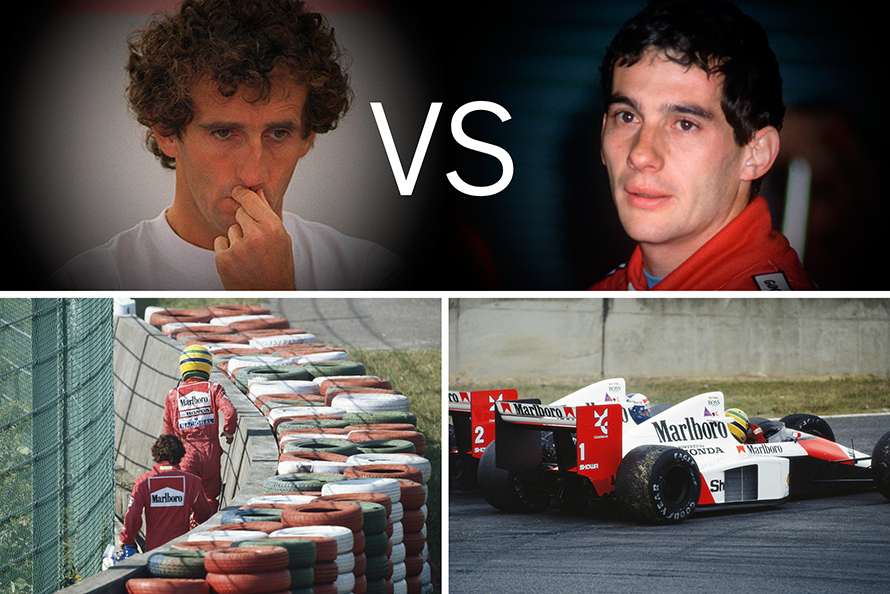
Rivalometer 5/5
Defining characteristic passion versus The Professor
Frenchman Alain Prost and Brazilian Ayrton Senna were polar opposites in terms of the way they drove. Nicknamed “The Professor”, Prost was a calculating pilot with a long-term vision of picking up world titles rather than going all out for individual victories. Senna’s much more passionate approach, on the other hand, often involved “out of body” experiences that pushed beyond the limits of what was thought possible in the pursuit of race wins. Finishing second was not an option for him.
Which is possibly why the two personalities clashed when they both found themselves at McLaren for the 1988 championship. Prost got his first taste of his new team-mate’s no-compromise attitude when Senna almost forced him into the pit wall at 180mph in the Portuguese GP. That season Prost scored more points overall (105 to Senna’s 94) but as points for only the drivers’ best 11 races counted, the title went to Senna: 90 points to 84.
In 1989, Prost refused to let Senna through in the penultimate race when vying for the title, with both cars skidding into an escape road and stalling. Prost jumped out of his car but Senna returned to the track and battled to victory only for the sport’s governing body, headed by a Frenchman, to strip him of the win under a technicality. This handed the title to Prost – a bitter pill to swallow for Senna.
The following year, Prost moved to Ferrari (see below) but the rivalry continued, Senna infamously ramming the Frenchman off the road at the Japanese GP, thereby securing the title for himself.
4 Nigel Mansell / Alain Prost
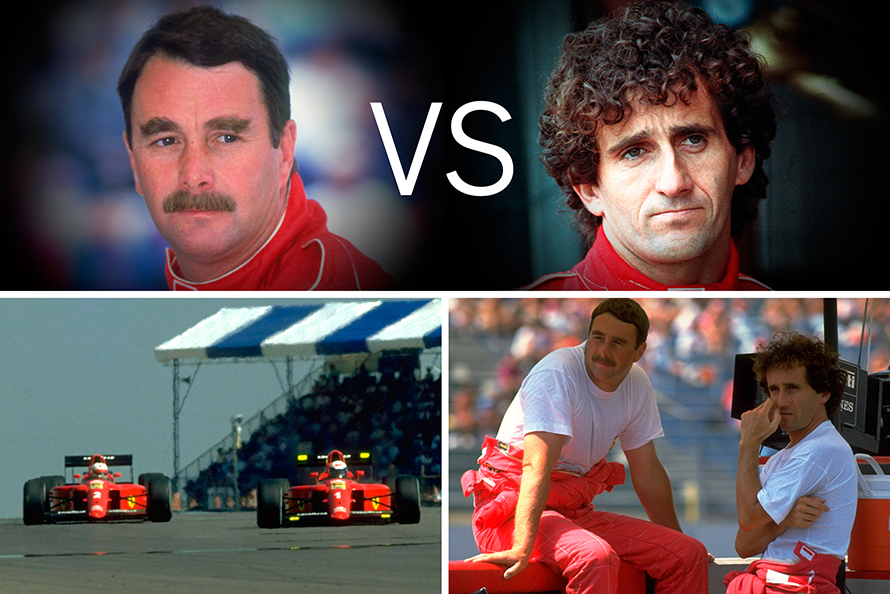
Rivalometer 4/5
Defining characteristic Il Leone’s conspiracy theory
It was out of the frying pan and into the fire for Prost at Ferrari, where he joined the incumbent Nigel Mansell. Mansell had become known to tifosi (Ferrari fans) as “Il Leone”, thanks to his fearless driving style.
Despite having the supporters on his side, Mansell felt that he didn’t have the same level of support from his team after the reigning world champion joined. Mansell claimed that he was now getting second-rate equipment and that, when Prost suspected the Brit’s chassis was superior, the mechanics had swapped the cars over and changed the numbers to hide the switch.
Mansell hampered his team-mate’s progress at the 1990 Portuguese GP by allegedly blocking him after a poor getaway from the grid, allowing the McLarens of Ayrton Senna and Gerhard Berger through into the lead.
Mansell announced his retirement from F1 mid-season but later overturned the decision after a drive at the Williams team presented itself. However, Il Leone quit for real when Prost was hired by Williams for the 1993 season, choosing to move to the CART IndyCar series in the US rather than be teamed up with the Frenchman again.
5 Gilles Villeneuve / Didier Pironi
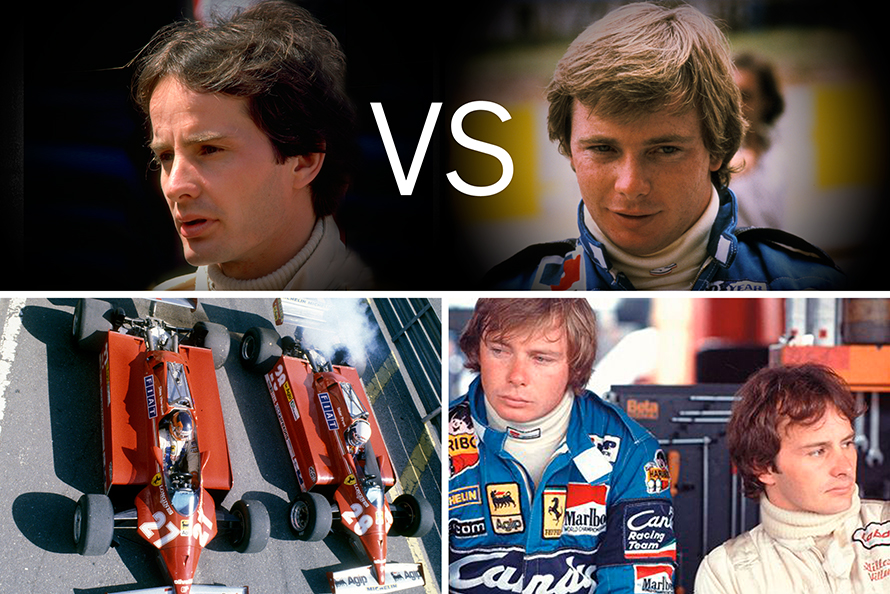
Rivalometer 4/5
Defining characteristic a bitter feud with a tragic end
In the 1982 San Marino GP at Imola, Ferrari team-mates Gilles Villeneuve and Didier Pironi diced for victory in the closing stages of the race. But it wasn’t supposed to be that way – with Villeneuve in the lead on lap 41, Ferrari held out a pit board reading “slow”, indicating that both drivers should hold position to the chequered flag. Pironi had other ideas and overtook, forcing Villeneuve to ramp up his pace again and re-take the lead by force before slowing again. Pironi took the opportunity to re-pass on the final lap and took the chequered flag, which infuriated the Canadian.
Villeneuve swore never to speak with Pironi again and, tragically, he never did. In qualifying for the next race at the Belgian GP in Zolder, while chasing Pironi’s lap time, the 30-year-old was killed in an horrific accident after clipping the back of Jochen Mass’s March. The Ferrari cartwheeled, throwing Villeneuve out of the cockpit.
To this day, some of Villeneuve’s fans still feel Pironi was indirectly responsible for the accident.
6 Damon Hill / Michael Schumacher
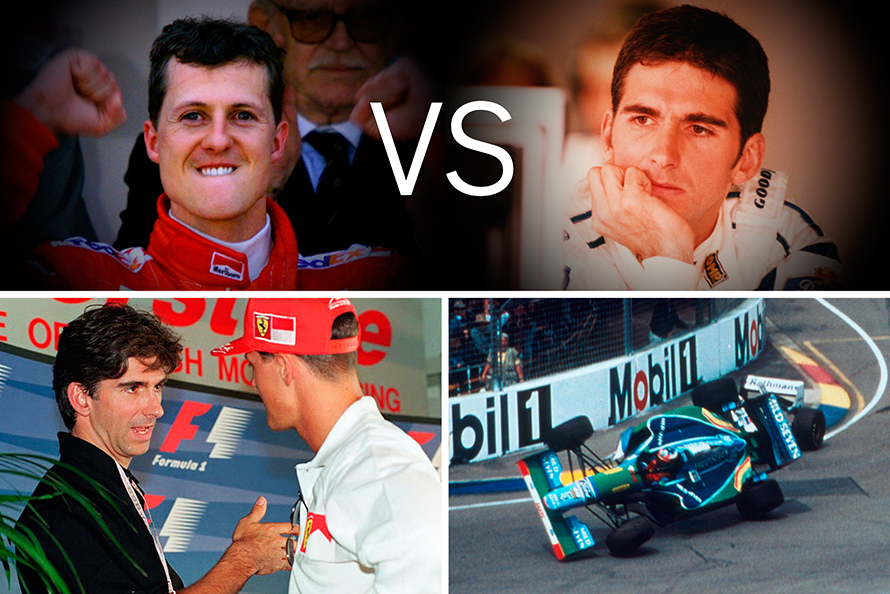
Rivalometer 3/5
Defining characteristic he got his revenge… eventually
Damon Hill claims to have great respect for the seven-time world champion Michael Schumacher, but other less forgiving drivers may have reacted very differently after the German crashed into him during the championship-deciding Australian GP of 1994. The collision forced both drivers to retire and, as Schumacher was the points leader going into the race, he won the title that year. Many regarded it as a deeply cynical move and characteristic of the glory-at-all-costs German.
Hill and Schumacher had further comings-together during the 1995 season, notably at Hill’s home race at Silverstone while battling for the lead, forcing the Brit to retire, but also at the Belgian and the Italian GPs.
Hill had his revenge in 2010, however. As a steward for the Monaco GP, he slapped a 20-second penalty on Schumacher, who had come out of retirement for a second stint in F1, for illegally overtaking Fernando Alonso in the last corner of the last lap. It dropped Schumi from a points-scoring sixth place to an also-ran 12th.
7 Carlos Reutemann / Alan Jones
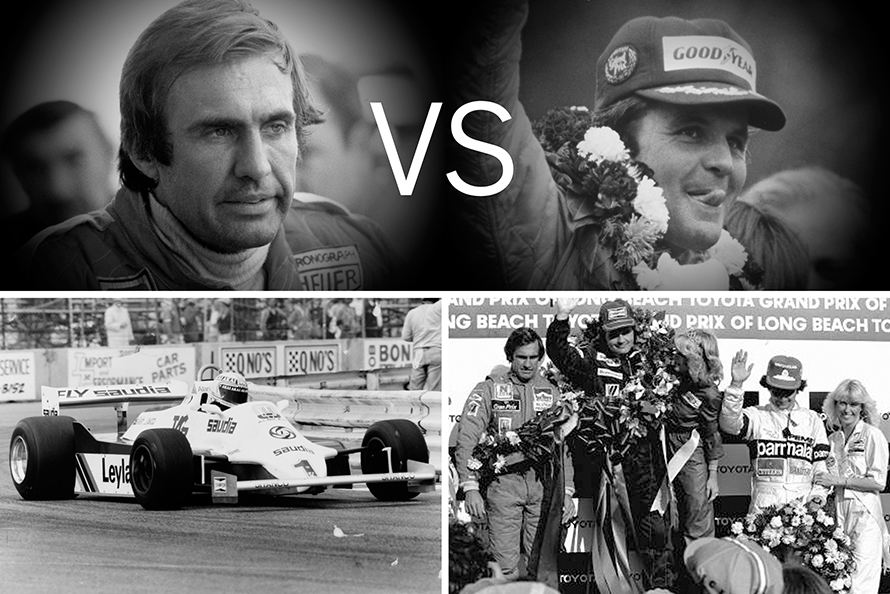
Rivalometer 5/5
Defining characteristic ignore team orders at your peril
A bitter rivalry began between Argentine Carlos Reutemann and Australian reigning champion Alan Jones, Williams team-mates for the 1981 F1 season, when Reutemann ignored team orders by refusing to let Jones by at the Brazilian GP. The feud continued all season and climaxed at the final, title-deciding race at Las Vegas where Jones would not lend support to Reutemann’s title hopes and won in dominant style, causing the Argentine to lose the championship to Nelson Piquet by a single point.
Jones decided he had had enough and retired from F1 at the end of that season. Reutemann extended an olive branch, suggesting the two should bury the hatchet. “Yeah,” replied Jones. “In your f*****g back, mate.”
Despite Jones’ departure (and maybe because of it) bad blood within the team remained. Reutemann quit Williams and F1, just two races into the following season.
8 Niki Lauda / James Hunt
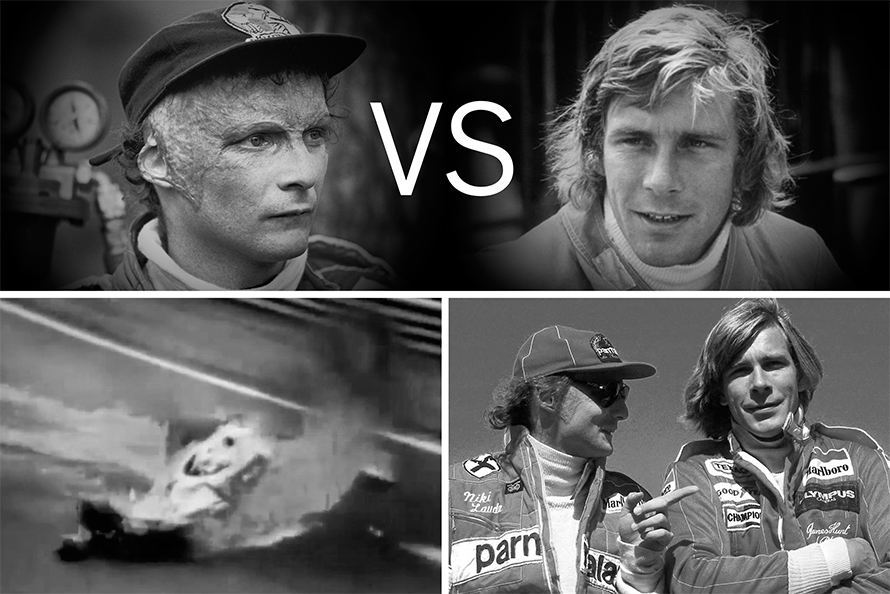
Rivalometer 3/5
Defining characteristic Lauda’s phoenix-like comeback
The 1976 F1 season is the stuff of legend and will soon be immortalised in the film Rush, directed by Ron Howard. After the sixth race of the season, Ferrari’s Niki Lauda had won five races and was comfortably leading the championship. Meanwhile, James Hunt in a McLaren was languishing down the points table with just six points. A remarkable comeback took place and by the British GP, Hunt was second in the rankings.
But there was tragedy at the German GP when Lauda’s car caught fire and the Austrian was trapped in the flames for nearly a minute. In hospital, Lauda was so severely burned that he was issued the last rights by a priest. Remarkably, not only did Lauda survive but he also returned to racing just six weeks later at the Italian GP. He finished fourth.
The championship came down to the wire at the final race in Japan, with Hunt trailing Lauda by three points. On race day it rained heavily – too heavy for Lauda, who along with a number of other drivers made the decision to pull out of the race after two laps. Hunt continued and battled back from fifth to third, just giving him the points he needed to clinch the title. He won by a single point.
While the drivers had huge respect for each other throughout, it’s worth including in this list as the greatest, most inspirational season-long battle in F1 history.
9 Heinz-Harald Frentzen / Michael Schumacher
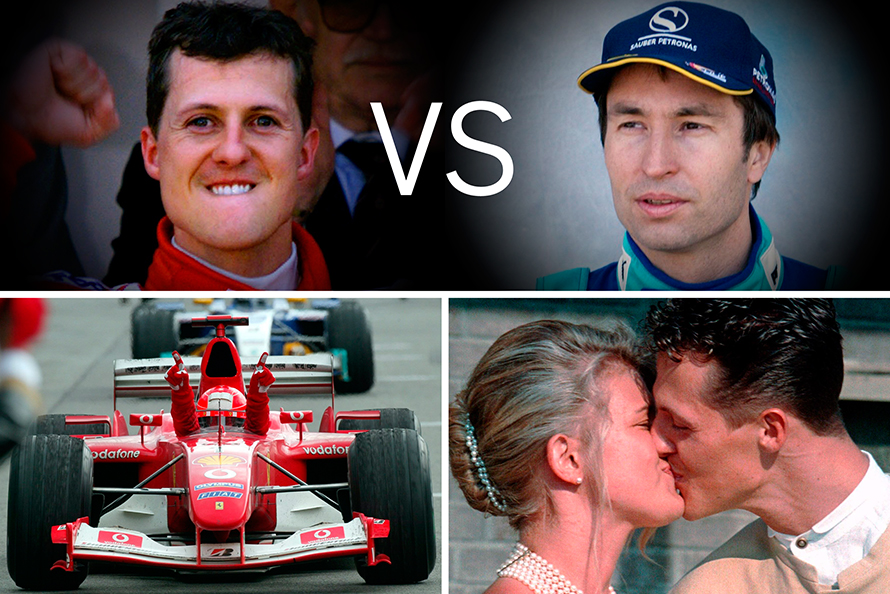
Rivalometer 3/5
Defining characteristic bitter life (and love) rivals
Heinz-Harald Frentzen’s early motor racing career almost exactly matched that of Michael Schumacher but while Schumi ended up with seven F1 world titles to his name, Frentzen managed just three grands prix wins out of 160 starts.
From the start of his racing career at the age of 12 Frentzen was competing against Schumacher, the pair facing off at the Kerpen kart track near Dusseldorf. The pair met again in German Formula 3 in 1989, where they finished runners up to Karl Wendlinger on exactly the same points. Schumacher reportedly forced Frentzen off the track in a critical race that would have landed the winner an F1 test. Although Schumacher won, the test never came to fruition.
However, all three drivers were funded by Mercedes after their F3 exploits, running in its sports car programme. In 1991 Frentzen split away in an ill-fated F3000 campaign that set his career back while Schumacher, still running in Mercedes sports cars, somehow landed a surprise F1 drive with Jordan mid-way through the season. As if this wasn’t enough, Frentzen’s girlfriend, Corinna Betsch left him at the end of 1991, only to shortly after appear on the arm of one Michael Schumacher. Four years later the pair married.
Frentzen eventually made it into F1 in 1994, and tangled with Schumacher a number of times – notably at the Canadian GP in 1998 – but never achieved the same success. Was he bitter? “I think I took the wrong decisions while Michael took the right ones,” Frentzen reflected in 2011.
10 Jim Clark / Graham Hill
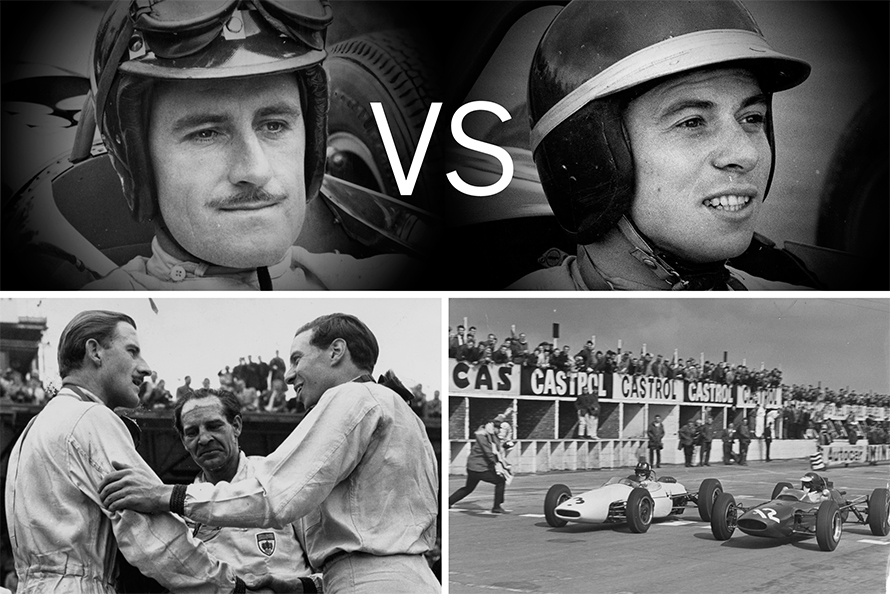
Rivalometer 2/5
Defining characteristic a gentlemanly battle
In the 1960s, F1 driver rivalries were altogether more civilised but the battle between Scot Jim Clark and quintessential Englishman Graham Hill was no less heated. Both entered grand prix racing in 1958 but it was the 1962 season that first saw them fight it out for the world title with it all coming down to the wire at the final race of the season in South Africa. Clark needed to win and duly took pole position in his Lotus-Climax 25 with Hill alongside in a BRM, but the Scot retired with an oil leak, thereby handing the championship to Hill.
Clark and Hill remained close rivals during the following years but while Clark won the world title in dominant fashion in 1963, and was crowned again in 1965, Hill missed out again and again. In ’66 Hill decided it was time to leave BRM and joined Lotus for 1967, making him team-mate to Clark at the height of their rivalry. When Clark was asked about being Hill’s team-mate he replied, “I am not Graham Hill’s team-mate. He is my team-mate.”
Search for and buy used cars here


